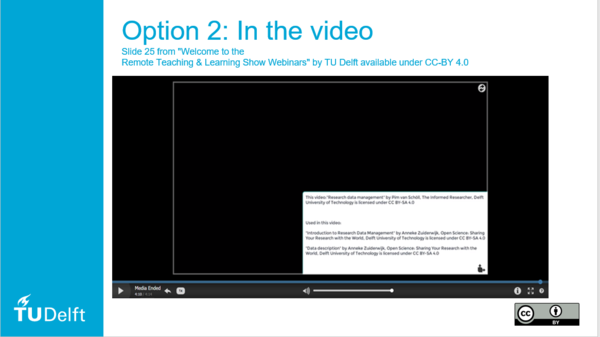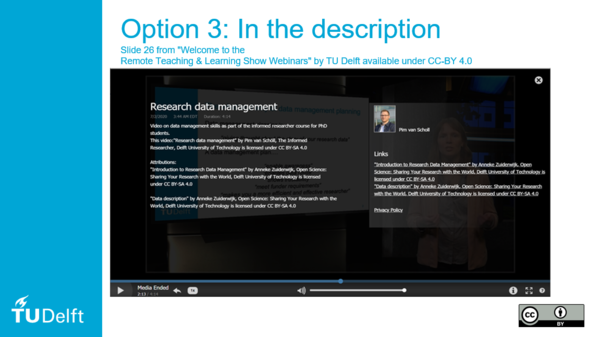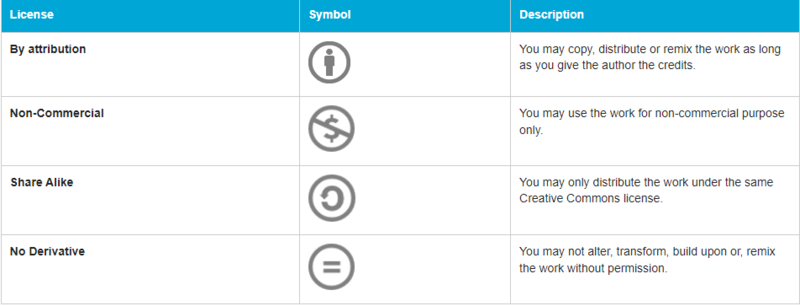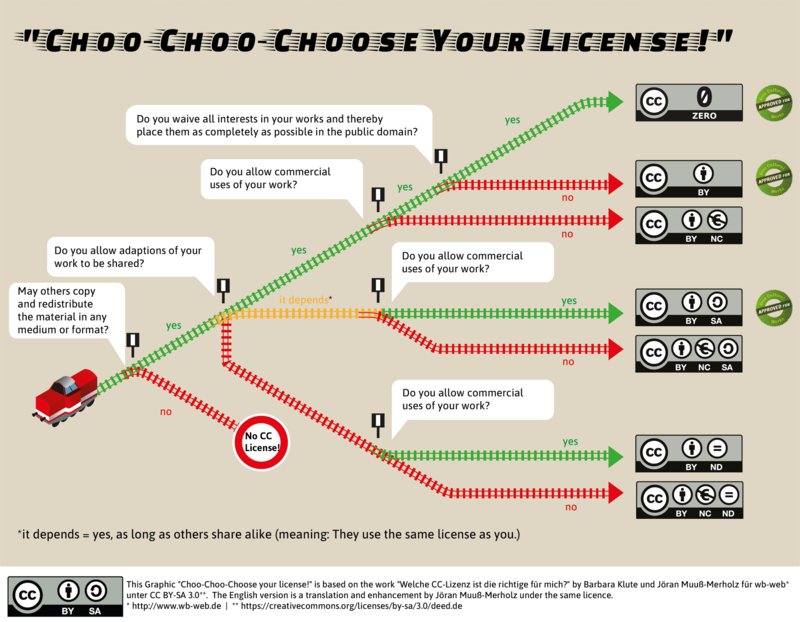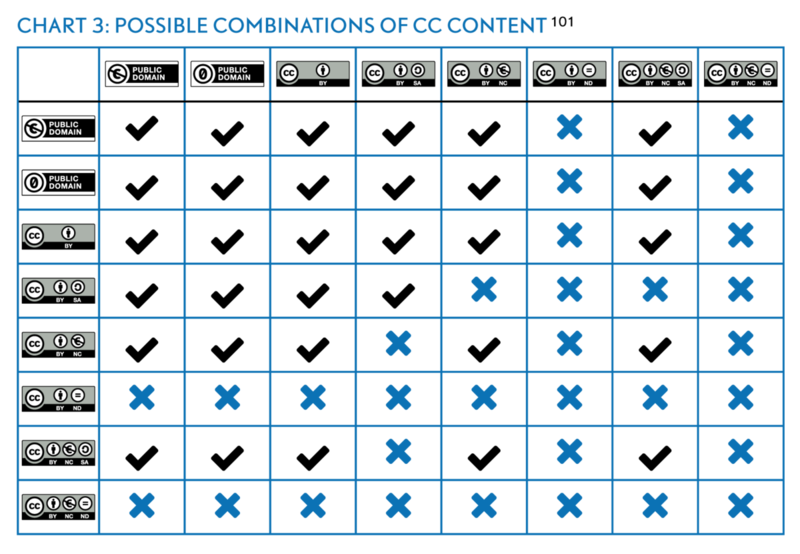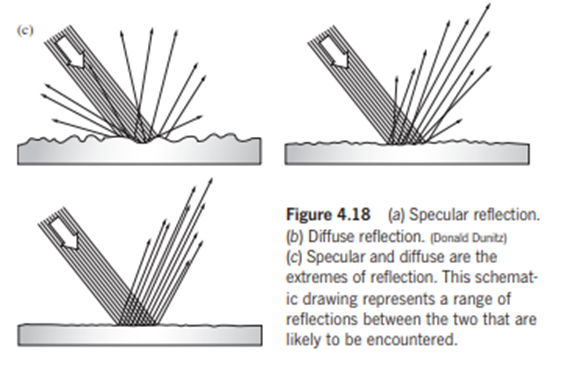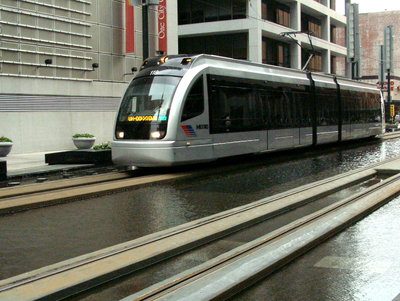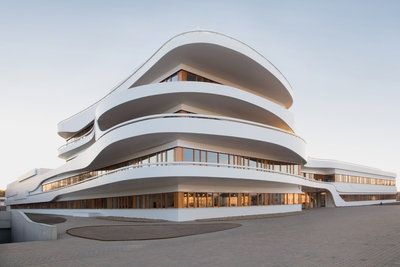Student copyright questions and answers
- As a student, I want to cite works in my multimedia
- As a student, I want to cite works in my software / data
- As a student, I want to choose a license for my multimedia / student paper, thesis, etc. / data
- As a student, I want to cite works in my student paper, thesis etc.
- As a student, I want to re-use multimedia in my multimedia / student paper, thesis, etc.
- As a student, I want to re-use software in my multimedia / software / student paper, thesis, etc.
- As a student, I want to re-use data in my multimedia / data / student paper, thesis, etc.
- As a student, I want to re-use text in my multimedia / student paper, thesis, etc.
- As a student, I want to share my multimedia / student paper, thesis, etc.
- As a student, I want to share my data
- As a student, I want to share my software
- As a student, I want to sign a contract for my multimedia / software / data / student paper, thesis etc.
- As a student, I want to do a plagiarism check on my multimedia
- As a student, I want to do a plagiarism check on my software
- As a student, I want to do a plagiarism check on my data
- As a student, I want to do a plagiarism check on my student paper, thesis, etc.
- As a student, I want to choose a license for my software
As a student, I want to cite works in my multimedia
You should always cite your sources properly, even if they are your own works. Failing to cite your sources properly will ultimately lead to accusations of plagiarism.
Video
There are three ways to reference your sources in a video:
- On the website/platform used to view the video e.g., in Brightspace.
- In the video itself.
- In the description of the video.
Source: Van Scholl, P. (2020). Webinar 16: Modifying an OER [PowerPoint slides]. TU Delft. https://docs.google.com/presentation/d/1kkTcqTHDvSbgT42QSRLakjzqppCIoTPu/edit#slide=id.g8b7b4e0130_0_41
There are different styles for referencing sources properly, such as APA and IEEE. For more examples, please visit the TUlib website and APA 7th Citation Examples. If the video has a Creative Commons license, you can use the Open Attribution Builder.
As a student, I want to cite works in my software / data
You should always cite your sources properly (in the accompanying text), even if they are your own works. Failing to cite your sources properly will ultimately lead to accusations of plagiarism. There are different styles for referencing sources properly, such as APA and IEEE. For more examples, please visit the TUlib website and APA 7th Citation Examples.
As a student, I want to choose a license for my multimedia / student paper, thesis, etc. / data
Choose a license for your own work
Remember that you cannot revoke the license. Once you apply a CC license to your material, anyone is free to use your material under that license for as long as the material is protected by copyright and similar rights, even if you later stop distributing it.
Make sure the material is appropriate for CC licensing and that you have the right to share it under a CC license. For example, confidential information or work created as part of a contract/agreement cannot be shared under a CC license. Specify precisely what it is that you are licensing. Any given work consists of multiple elements, e.g., text, images, music. Make sure to clearly mark or indicate in a notice which of those elements are or are not covered by the license.
Creative Commons provides two options to help you choose the right license.
The first option is a ‘License Chooser’. By answering a few questions, you will receive a snippet of HTML code that the creators of works, their users, and the Web itself can understand. For more information about the licensing possibilities, visit the Creative Commons website.
This table outlines the main license types:
For more information about all types of licenses, please check the general page for Creative Commons.
The second option is to adopt a license by sharing your work on a platform that works with Creative Commons licenses. These platforms have built-in CC options that let you mark your work with a CC license through their account settings. The main benefit of this approach is that it allows other people to find your work when searching for CC-licensed material on those platforms. Platforms that work with CC licenses include Flickr, Vimeo and YouTube.
We recommend using CC BY for your own works to reach a bigger audience and receive more credit.
One of the Creative Commons licenses is essentially a waiver (CC0). We suggest avoiding this license/waiver, as you will give up your copyright and your work will be part of the public domain. This means that anyone could use your work at their own discretion without your permission.
Make sure the license grants permission for what you want to do:
TIP
To find out exactly how to mark your work with a Creative Commons license, go to wiki.creativecommons.org.
If you want to combine or remix two works with a Creative Commons license, check the table below to find out whether you are allowed to. Look for the license of the first work in the first row and the license of the second work in the first column. If the cell where the row & column intersect has a check mark, you can combine or remix the works. Use the most restrictive license of the two for your new work.
"Open Content - A Practical Guide to Using Open Content Licences" by Markus Büsges is licensed under CC BY-SA 4.0.
TIP
If you do not know which license to choose, please contact the Copyright Information Point.
As a student, I want to cite works in my student paper, thesis etc.
How to cite sources in new work
You should always cite your sources properly, even if they are your own works. Failing to cite your sources properly will ultimately lead to accusations of plagiarism. There are three ways to include information from sources in your own text: you can quote, paraphrase, or summarise it.
Quoting
If the exact wording used in the original document is important, you should quote the text, e.g., when the formulation used by the author matters. Put the quotation between double quotation marks to indicate that the words are not your own and add a reference. Important: long quotations of 40 words or more are considered block quotations and are formatted in an isolated block without quotation marks.
When quoting other texts, bear in mind that:
- Too many quotations make your text difficult to read.
- Quotations must not be too long. Your text should mostly be your own, not a copy of what someone else wrote.
Paraphrasing
Often, you will find yourself wanting to use ideas put forward in someone else’s work in your own. By paraphrasing other people’s ideas instead of quoting them directly, you can show that you understand the idea(s)in question. A paraphrase is approximately the same length as the original text.
Paraphrase a text by describing the original idea(s) in your own words and adding a reference.
When you paraphrase:
- Use your own words. You have to do more than just replace one or two words with a synonym!
- Make sure your readers are absolutely clear about which parts of your text are paraphrases, and which parts are your own ideas.
Summarising
Summarising means describing a significant part of someone else’s work in a few sentences. This lets you incorporate a complete overview of someone else’s ideas into your own work. The rules for summarising are the same as for paraphrasing: use your own words and add a reference.
Formatting your references
There are certain rules for the order of the references in your reference list as well as for the formatting of the references themselves. These rules are determined by the citation style (or reference style) you choose. A reference must contain enough information to be traceable. There are many different citation styles to choose from. Two examples are APA and IEEE. For more examples, please visit the TUlib website and APA 7th Citation Examples.
Text generated by AI tools (such as ChatGPT)
Describe how you used the tool in your methodology section or introduction and mention the prompt. Consult always the rules of your reference style when and how content from the AI tool can be used and cited.
You should always mention that the work was created by an AI tool and you should never use it as it is generated by an AI tool without changing anything and without any reference. If you decide to use it without changing anything, then this might be considered violation of academic integrity. You should try to find sources to validate the output an AI gives you. If not, then you might have incomplete or incorrect content in your work. You should edit, proofread and make the text your own.
Images
All reproduced images, photographs, tables and figures in your work must be cited three times: in the text, in the caption beneath the image (including a copyright statement) and in the reference list. You do not have to include a copyright statement if you bought a stock photo or if the image is your own work. In that case, use the words “own work” in the caption or add a note in your text stating that unreferenced photos or drawings are your own.
Copyright statement example
Include the following information in the image caption:
- Figure X
- Title of the figure
- “From” or “Adapted from” (this is the start of the copyright statement)
- The title, author(s), year of publication, and the source of your image
- Copyright year and the name of the copyright holder
- Copyright permission: “Reprinted [or Adapted] with permission” (only if you have permission) or “In the public domain”
Example copyrighted image:
Figure 4.18: Reflections. From Optics (5th ed. p. 108), by E. Hecht, 2017, Harlow: Pearson. Copyright 2017 by Pearson, No further use is allowed.
In-text citation of this example:
As shown in fig. 4.18, there are different …
In the reference list:
Hecht, E. (2017). Optics (5th ed.). Pearson.
Example open licensed image:
You can use the Attribution Builder to create a proper attribution
Figure 7: Light rail Houston. From “Wikimedia Commons,” by M. Haase, 2006 (https://commons.wikimedia.org/wiki/File:Light_Rail_Houston.jpg). Licensed under CC BY 2.5.
In-text citation of this example:
As shown in fig. 7, Houston is one of the cities in the USA with a light rail system.
In the reference list:
Haase, M. (2006). Light rail Houston [Photograph]. https://commons.wikimedia.org/wiki/File:Light_Rail_Houston.jpg
As a student, I want to re-use multimedia in my multimedia / student paper, thesis, etc.
The first thing to do is check whether the image, photo, video (still) etc. you want to reuse in your own work is a copyrighted work or a work with an open license (e.g. Creative Commons license). If you cannot find any mention of copyright, you should always assume that it is a copyrighted work (all rights are reserved), which means that you have to ask permission.
Copyrighted multimedia
If you want to reuse copyrighted images, photos, video (stills) etc. you need permission from the copyright holder in writing. You must inform the copyright holder about why you need to reuse the image, photo, video (stills) etc., under what conditions and in what environment. For an example of how to request permission, use the request permission form. This is a template only and should be adjusted based on your specific situation.
If you don’t want to ask permission to use an image, you are allowed to use the right to quote. The right to quote is laid down in Article 15a of the Dutch Copyright Act. This right not only applies to parts of texts, but also lets you reproduce photos and images in their entirety as scientific illustrations.
There are certain rules to follow when using the right to quote. One important rule is that you must reference the source and the name of the creator. You may only quote works that have already been lawfully published. To quote unpublished work, you need the permission of the creator. A quotation should serve to clarify an argument or description, must therefore be relevant to the argument, and should only constitute a small part of your work as a whole. Summarising, you have to meet the following requirements when quoting someone else’s work:
- You can only do so for a clearly identifiable purpose.
- You may not quote more than is strictly necessary.
- You must reference the source.
- The source must have been lawfully published.
If one of these requirements is NOT met, you must ask for permission. You can only use the right to quote when strictly necessary.
Beware:
- Some professionals, such as photographers, cartoonists, draughtsmen, filmmakers, graphic designers, and illustrators are very sensitive about the reuse of their work. After all, it is how they make their living. Generally, limit using the works of these professionals as much as possible.
- The right to quote does not cover using images for decorative purposes in your work (e.g., cover of a paper/thesis). In this case, always ask for permission or use open images.
Multimedia with an open license
- Images, pictures, videos etc. with Creative Commons licenses.
- images, graphs, charts and diagrams, videos you made yourself and for which you still hold the copyright
- Images, pictures etc. whose copyrights have expired. Generally, copyrights expire 70 years after the year of the death of the creator, after which you no longer need permission to use the image.
For open materials, go to the Open Educational Resources webpage (click on the Open multimedia-tab in the middle of the webpage).
Example of reproducing an image with an open license.
Firmenzentrale Kaffee Partner. The fluid outlines conceal the orthogonal grid of the concrete skeleton construction buildings and lend the architecture an impression of dynamics, 2012. By Emanuel Raab licensed under CC BY-SA 3.0.
Always check the Creative Commons license of a picture, image, etc., to see what you are allowed to do with it.
TIPS
- Pictures with people
Before reusing pictures with people, you must be sure that no portrait rights apply. If they do, you must have permission from the person depicted to show the photo/multimedia.
- Images of works of art
Before re-using these images, bear in mind that works of art such as statues or paintings are protected by copyright. You are not allowed to use pictures of a painting or statue that you took yourself without permission of the artist.
You are free to use pictures that you have taken of a work of art that is permanently located in a public space (e.g., public road, railway station, shopping centre or town hall). For pictures taken by someone else, you need to request permission. It is important that the work is depicted amidst its surroundings.
Museums and schools are not public places, so pictures taken in a museum, or a school cannot be used without permission.
You should always cite your sources properly, even if they are your own works. Failing to cite your sources properly will ultimately lead to accusations of plagiarism.
For more information about how to cite, choose the option “cite works in”.
As a student, I want to re-use software in my multimedia / software / student paper, thesis, etc.
The first thing to do is check what type of license the software you want to reuse has.
If you cannot find any mention of the license or copyright, you should always assume that you are not allowed to reuse the software because all rights are reserved. This means that you must ask permission from the copyright holder.
Copyrighted software
If you want to reuse copyrighted software, you need permission from the copyright holder in writing. You must inform the copyright holder about why you need to reuse (parts of) the software, under what conditions and in what environment. For an example of how to request permission, use the request permission form. This is a template only and should be adjusted based on your specific situation.
Software with an open-source license
Open-source software licenses indicate how software may be used, modified, or distributed and by whom. Check the ”TU Delft Research Software Guidelines” (Appendix 2, pages 35-42) for software licenses. For more information about software licenses and questions about re-using software, contact the Copyright Information Point.
You should always cite your sources properly, even if they are your own works. Failing to cite your sources properly will ultimately lead to accusations of plagiarism. For more information about how to cite, choose the option “cite works in”.
As a student, I want to re-use data in my multimedia / data / student paper, thesis, etc.
The first thing to do is check whether the dataset you want to reuse in your own work is a copyrighted dataset or a dataset with an open license. If you cannot find any mention of copyright, you should always assume that it is a copyrighted dataset (all rights are reserved), which means that you will have to ask permission from the copyright holder.
On this page we refer to the data as datasets which are numerical facts that are organized in a systematic way. If by using the term data you mean that data are e.g., images or works that are protected by copyright separately, you will need to check if you can use these works based on the copyright rules and conditions that apply to each one of these works separately. If in doubt, please contact the Copyright Information Point.
Attention: Not all data can be re-used. Types of data that cannot be re-used are confidential data, personal data or data that are not allowed to be re-used based on a contract or an agreement. Always check what you can or cannot do when it comes to the re-usability of the data. For example, in the case of confidential data, you should check the contract you have signed with the party that gave you access to this data (most likely you will not be able to re-use confidential data as it has “confidential” status). In case of personal data please check the Privacy for Students page on the TU Delft website to find out what you can and/or cannot do.
Copyrighted datasets
If you want to reuse a copyrighted dataset you need permission from the copyright holder(s) in writing. You must inform the copyright holder about why you need to reuse (parts of) the dataset, under what conditions and in what environment. For an example of how to request permission, go to the request permission form. This is a template only and should be adjusted based on your specific situation.
If applicable, the “right to quote” could also be used within its own limitations.
You have to meet the following requirements when quoting someone else’s work (e.g., dataset):
- You can only do so for a clearly identifiable purpose.
- You may not quote more than is strictly necessary.
- You must reference the source.
- The source must have been lawfully published.
If one of these requirements is NOT met, you must ask for permission. You can only use the right to quote when strictly necessary.
If applicable, the students can apply the “text and data mining” exception in their research. This can only happen when the purpose is only scientific and the access to the data is lawful. It is not allowed to publish the data obtained based on the text and data mining exception. In case you would like to re-use part of the data in your publication, please check above whether the right to quote could be of help, otherwise permission is needed.
Datasets with an open license
Open datasets are datasets with an open license (e.g., Creative Commons license). These datasets are published in data repositories (e.g. 4TU.ResearchData) and can be re-used according to the license conditions.
For more questions about re-using data, contact the Copyright Information Point.
You should always cite your sources properly, even if they are your own works. Failing to cite your sources properly will ultimately lead to accusations of plagiarism.
For more information about how to cite, choose the option “cite works in”.
As a student, I want to re-use text in my multimedia / student paper, thesis, etc.
Copyrighted texts
Generally, you need to ask for permission in order to use someone else’s work. However, you are always allowed to summarise and paraphrase texts written by someone else or you can rely on the right to quote (for more information, see below). You should always cite your sources properly, even if they are your own works. Failing to cite your sources properly will ultimately lead to accusations of plagiarism.
The right to quote is laid down in Article 15a of the Dutch Copyright Act. This right not only applies to parts of texts, but also permits you to reproduce photos and images in their entirety as scientific illustrations. There are certain rules to follow when using the right to quote. One important rule is that you must reference the source and the name of the creator. You may only quote works that have already been lawfully published. To quote unpublished work, you need the permission of the creator. A quotation should serve to clarify an argument or description, must therefore be relevant to the argument, and should only constitute a small part of your work as a whole.
Summarising, you have to meet the following requirements when quoting someone else’s work:
- You can only do so for a clearly identifiable purpose
- You may not quote more than is strictly necessary.
- You must reference the source.
- The source must have been lawfully published.
If one of these requirements is NOT met, you must ask for permission. You can only use the right to quote when strictly necessary.
To find out how to summarise, paraphrase and quote texts, choose the option “cite works in”.
Texts with an open license
To find out what you can do with the text, check the Creative Commons license. You are always allowed to summarise, paraphrase and quote texts, but don’t forget to attribute the source. Failing to cite your sources properly will ultimately lead to accusations of plagiarism.
For more information about how to cite, choose the option “cite works in”.
Text generated by AI tools (such as ChatGPT)
Describe how you used the tool in your methodology section or introduction and mention the prompt.
You should always mention that the work was created by an AI tool and you should never use it as it is generated by an AI tool without changing anything and without any reference. If you decide to use it without changing anything, then this might be considered violation of academic integrity. You should try to find sources to validate the output an AI gives you. If not, then you might have incomplete or incorrect content in your work. You should edit, proofread and make the text your own.
For more information about how to cite, choose the option “cite works in”.
Texts used under the “text and data mining” exception
If applicable, the students can apply the “text and data mining” exception in their research. This can only happen when the purpose is only scientific and the access to the text(s) is lawful. It is not allowed to publish the text(s) obtained based on the text and data mining exception. In case you would like to re-use part of the text(s) in your publication, please check above whether the right to quote could be of help or try to paraphrase or summarise the text(s), otherwise permission is needed.
As a student, I want to share my multimedia / student paper, thesis, etc.
Copyrighted works
You can share your work as you want, given the fact that you still own the copyright. If you signed a contract with a company or created the work during your internship, please check your contract to find out what is and is not allowed.
If you are about to sign a contract or you want to share your work with a third party, check the “sign a contract for” option.
Works with an open license
TU Delft supports the use of the Creative Commons Licenses framework. There are different kinds of Creative Commons (CC) licenses. With Creative Commons, you do not give up or transfer your copyrights, but do allow third parties to reuse your work under certain conditions.
As a student, I want to share my data
Raw data means data that has not been processed, coded, formatted or analysed. Raw data is not copyrightable, but raw data included in a database, for instance, can be copyrighted. Creative Commons (CC) licenses can be used to share them under certain conditions.
In this answer we refer to the data as numerical facts, organized in a systematic way. If by using the term data you mean that data is e.g., images or works that are protected by copyright separately, you will need to check if you can use these works based on the copyright rules and conditions that apply to each one of these works separately. If in doubt, please contact the Copyright Information Point.
Attention: Not all data can be shared. Types of data that cannot be shared are confidential, personal data or data that are not allowed to be shared based on a contract or an agreement. Always check what you can or cannot do.
Data in copyrighted works
You can share your work as you see fit, given the fact that you still own its copyright. In case you have signed a contract e.g., with a company, please check therein what is and is not allowed. In case you are about to sign a contract, please check the “sign a contract for” option.
Data in work with an open license
TU Delft supports the use of the Creative Commons (CC) licenses framework. There are different Creative Commons licenses. With Creative Commons you do not give up or transfer your copyright, but you allow third parties to re-use your work under certain conditions. For more information about the types of licenses, please check the general Creative Commons page and the Figshare website to find the most appropriate license for your data.
Posting a work with data on/in a website/repository/social media/TUD environment
Carefully check the terms and conditions beforehand. This will allow you to prevent transferring your copyright (if implied/stated in the terms and conditions) and tell you how you can use your data and who else would be able to use it later on and under what conditions.
As a student, I want to share my software
Copyrighted software
If you want to share your copyrighted software, you need permission from the copyright holder in writing (if you are not the copyright holder). If you have transferred the copyright or if you co-created the software with a company (joint ownership), please check the contract or the agreement you signed.
When asking for permission, you must tell the copyright holder why you need to reuse (parts of) the software, under what conditions and in what environment. For an example of how to request permission, go to request permission form. This is a template only and should be adjusted based on your specific situation.
Joint ownership of software with TU Delft
As a rule, Bachelor’s and Master’s students at TU Delft hold the rights to their own software unless they used university resources and/or received intellectual support from university researchers, software developers and/or staff to create said software. In any of the latter cases, they have joint ownership of the software (source: Research Software guidelines TU Delft page 10). If the software is a shared product, copyright belongs to TU Delft (source: Research Software guidelines TU Delft page 14). If you want to share the software openly, TU Delft will waive its claims under certain conditions. For more information, please check TU Delft’s Research Software guidelines (p. 14 ff.) and follow the procedure outlined in Chapter 4.
As a student, I want to sign a contract for my multimedia / software / data / student paper, thesis etc.
Signing a contract
We recommend that you carefully review the contract/agreement/statement you are sent by the publisher/third party/website administrator. Try not to give away all your copyrights.
Collaborating with a company
If you are collaborating with a company on your (new) work, check the conditions for publishing/sharing the work in the contract you signed.
Collaborating with teachers/researchers
Any students participating in creating the work will own the copyright to their own work. We recommend making clear agreements in advance to create clarity as to who will own the copyright to what in the future. The Addendum to the IPR guideline for students sets out guidelines for the relationship between universities and students regarding intellectual property and VSNU industrial rights. For more information, go to the TU Delft Intellectual Property website.
Posting your work on/in a website/repository/social media/TUD environment
Carefully check the terms and conditions beforehand. This will allow you to prevent transferring your copyright (if implied/stated in the terms and conditions) and tell you how you can use your work and who else would be able to use it later and under what conditions.
Publishing your work
Usually, publishers request that you transfer your copyright to them, so that they can make commercial use of your work. You can give publishers certain permissions by giving them a license (permission to use) for certain purposes such license to publish, license to communicate the work via their website, etc.
For more information, please check “sign a contract for” in the researchers’ question.
If you have further questions, please contact the Copyright Information Point.
As a student, I want to do a plagiarism check on my multimedia
“Mimi and Eunice: thief” by Nina Paley is licensed under CC BY-SA 3.0.
Preventing plagiarism
Plagiarism means using another person’s materials without citing the source properly. You can plagiarise text as well as multimedia such as images, photographs, tables and figures. Committing plagiarism has serious consequences, as explained on the Fraud & Plagiarism page on TU Delft student portal. You can prevent plagiarism by citing your sources correctly. Head to TUlib to find out how.
Copyright check for multimedia
TU Delft’s plagiarism software (Turnitin) is not suitable for multimedia or images. Contact the Copyright Information Point for a copyright check.
As a student, I want to do a plagiarism check on my software
“Mimi and Eunice: thief” by Nina Paley is licensed under CC BY-SA 3.0.
Preventing plagiarism
Plagiarism means using another person’s materials without citing the source properly. You can plagiarise text as well as software. Committing plagiarism has serious consequences, as explained on the Fraud & Plagiarism page on TU Delft student portal. You can prevent plagiarism by using open-source software and crediting the original creator. Check the ”TU Delft Research Software Guidelines” (Appendix 2, pages 35-42) for more information about software licenses or go to the APA 7th Citation Examples to find how to cite software.
Similarity check for software
TU Delft’s plagiarism software (Turnitin) is not suitable for detecting source code.
As a student, I want to do a plagiarism check on my data
“Mimi and Eunice: thief” by Nina Paley is licensed under CC BY-SA 3.0.
Preventing plagiarism
Plagiarism means using another person’s materials without citing the source properly. You can plagiarise texts as well as data. Committing plagiarism has serious consequences, as explained on the Fraud & Plagiarism page on TU Delft student portal. You can prevent plagiarism by using open datasets published in data repositories (e.g. 4TU.ResearchData) and crediting the original creator. Check out the APA 7th Citation Examples to find out how (choose Internet/Social media and then Data set).
Similarity check for datasets
TU Delft’s plagiarism software is not suitable for datasets.
As a student, I want to do a plagiarism check on my student paper, thesis, etc.
“Mimi and Eunice: thief” by Nina Paley is licensed under CC BY-SA 3.0.
Preventing plagiarism
Plagiarism means using another person’s materials without citing the source properly. Committing plagiarism has serious consequences, as explained on the Fraud & Plagiarism page on TU Delft student portal. You can prevent plagiarism by citing and paraphrasing correctly. Head to TUlib to find out how.
Similarity check with Turnitin
TU Delft uses the online Turnitin tool to check the originality of students’ papers, as well as BSc and MSc theses. Turnitin compares the students’ text with other resources (websites, published works, students’ papers) but does not check images, computer code, equations or numerical data.
Turnitin assignment in a Brightspace course
If your teacher has created a Turnitin assignment in your Brightspace course, you can upload your work in this assignment and view the similarity report (if enabled). More information on the similarity report can be found on the Teaching Support Turnitin webpage.
Similarity check via teacher/supervisor
If a Turnitin assignment is not enabled, you have to ask your teacher/supervisor for a similarity check. They can use the Brightspace course Turnitin Quick Submit for Teaching Staff to submit your work.
As a student, I want to choose a license for my software
Sharing software under an open license
TU Delft supports sharing software under open software licenses. For more information about open licenses applicable to software, please check the ”TU Delft Research Software Guidelines” (Appendix 2, pages 35-42). This GitHub website can help you choose an open-source license.
For more information about software licenses and questions about re-using software (relying on the right to quote), contact the Copyright Information Point.

